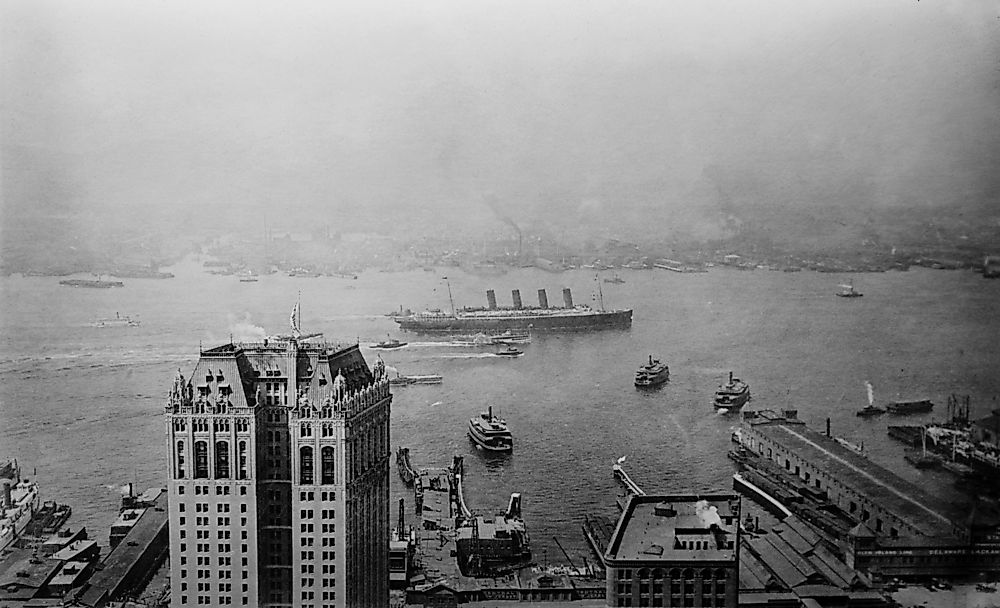When Did the US Join World War I?

Soon after the First World War broke out in Europe, US President Woodrow Wilson declared the country would maintain a policy of neutrality. A majority of Americans supported the plan. However, public opinion shifted when German U-boats sunk the British ocean liner RMS Lusitania in 1915 killing nearly 1,200 people including 128 Americans. In January 1917, the British intelligence intercepted communication between Germany and Mexico. The coded telegrams revealed Germany's plan to form an alliance with Mexico and attack the United States in which Mexico would reclaim Texas, New Mexico, and Arizona. The sinking of the Lusitania and the threat of a German-Mexican alliance prompted President Woodrow Wilson to ask Congress for a declaration of war. On April 4, 1917, the Senate and the House of Representatives overwhelmingly voted to declare war on Germany and on April 6, 1917, the United States officially declared war.
The Beginning Of WWI
Tension had been building in Europe due to political and economic differences, but there was still no reasons enough to spark a war. In June 1914, a Bosnian assassinated Archduke Franz Ferdinand and his wife Sophia Serb in the city of Sarajevo. Ferdinand was the heir to the throne of the Austria-Hungary Empire. One month later, Austria-Hungary declared war on Serbia, and within a week, Belgium, France, Russia, and Great Britain came to the aid of Serbia while Germany sided with Austria-Hungary. Bulgaria and the Ottoman Empire teamed up with the latter to form the Central Powers while the former allied with Portugal, Japan, and Italy to create the Allied Power. At this point, the United States chose to remain neutral and not intervene in the war.
The Sinking Of The Lusitania
Britain was America's closest ally and trading partner. Hundreds of ships traversed between the two countries carrying millions of tons of cargo. In 1915, Germany announced unrestricted attacks on ships voyaging between the two countries and attempted to quarantine the British Isles. A month later a German cruiser sunk a private American vessel, the US was outraged but German officials apologized and termed the attack a mistake. On May 7, a British liner; RMS Lusitania was attacked and sunk without warning while traveling from New York to Liverpool. About 1,200 people lost their lives including 128 Americans. Germany insisted the ship was carrying weapons to Great Britain, but the United States insisted it was an unarmed passenger and merchant freight. Germany pledged not to attack any other passenger liners, but in November, it struck an Italian passenger liner killing 272 passengers including 27 Americans. The public opinion on neutrality changed, and the citizenry demanded action from the government.
The Declaration Of War
On April 2, 1917, President Wilson asked Congress for the declaration of war against Germany citing German policy of unrestricted marine warfare and American interests in Europe. The Senate and the House of Representatives voted overwhelmingly in favor of the declaration and on April 6, 1917, the United States officially declared war on Germany. The US army was much smaller compared to European armies prompting Congress to enact the Selective Service Act that saw 2.8 million men drafted to the military. American troops reached Europe in June 1917 and began waging war against Germany in October. In December, the United States declared war against Austria-Hungary. By the end of the war in November 1918, about two million Americans had fought in the war. Approximately 50,000 Americans servicemen died in the war.











